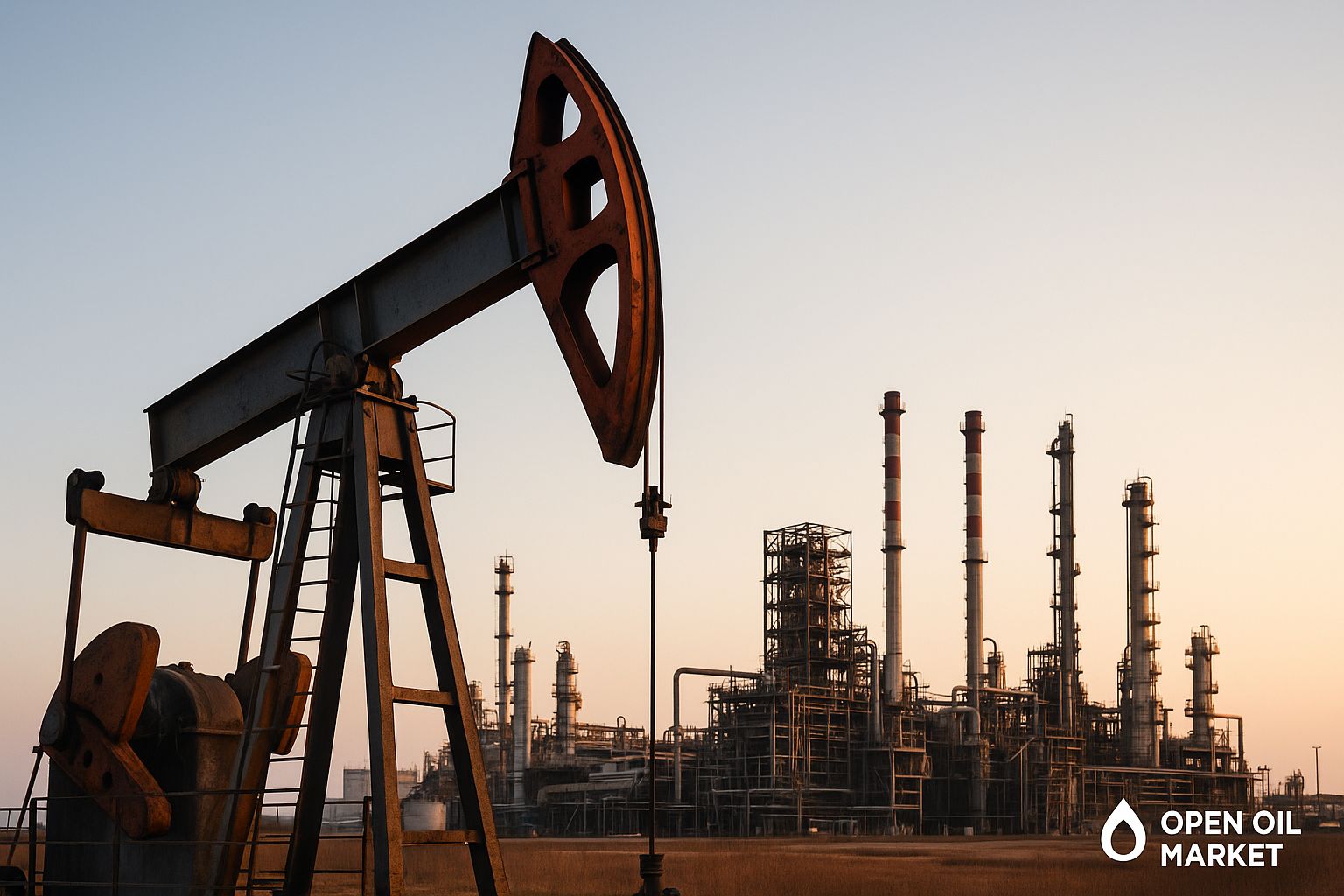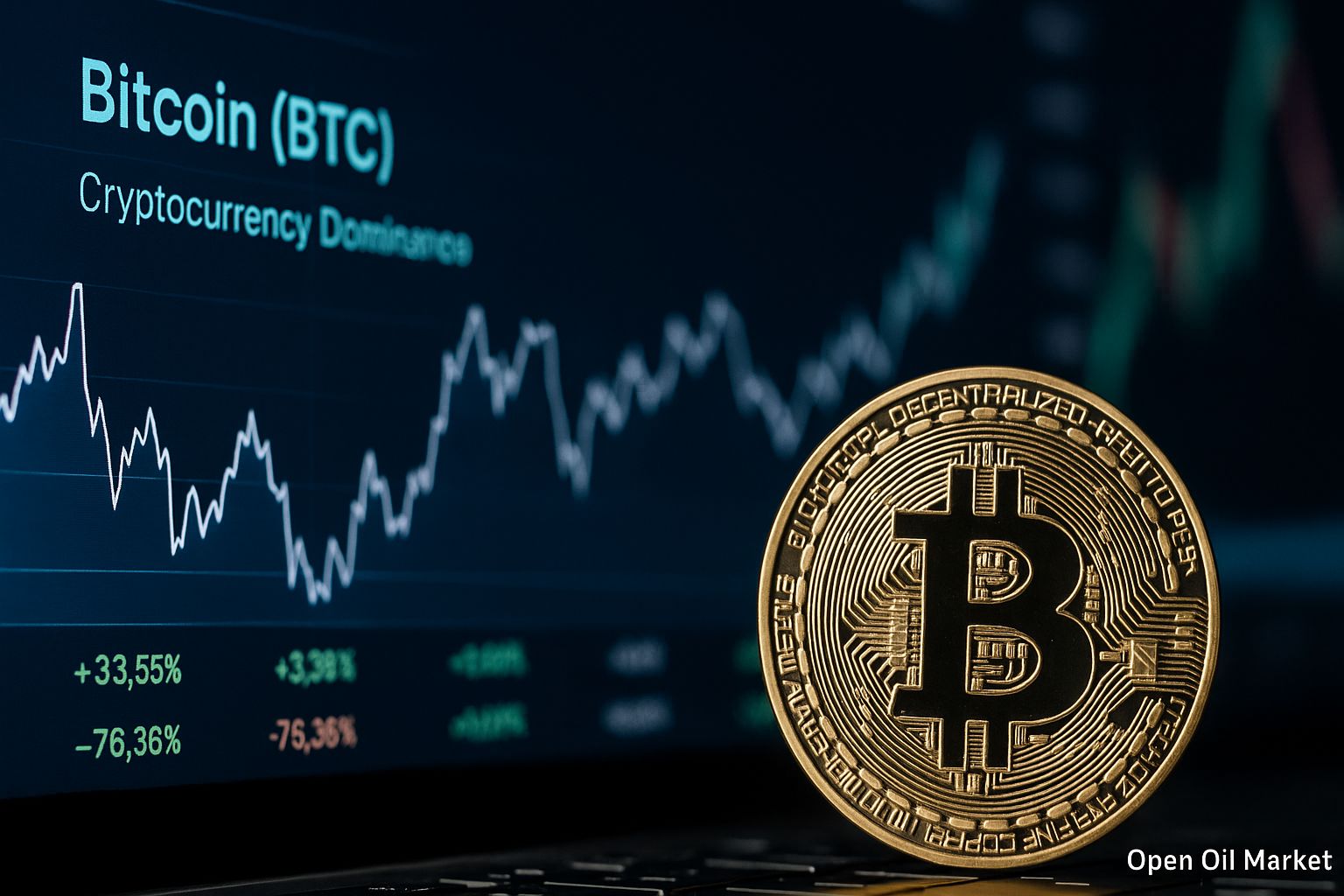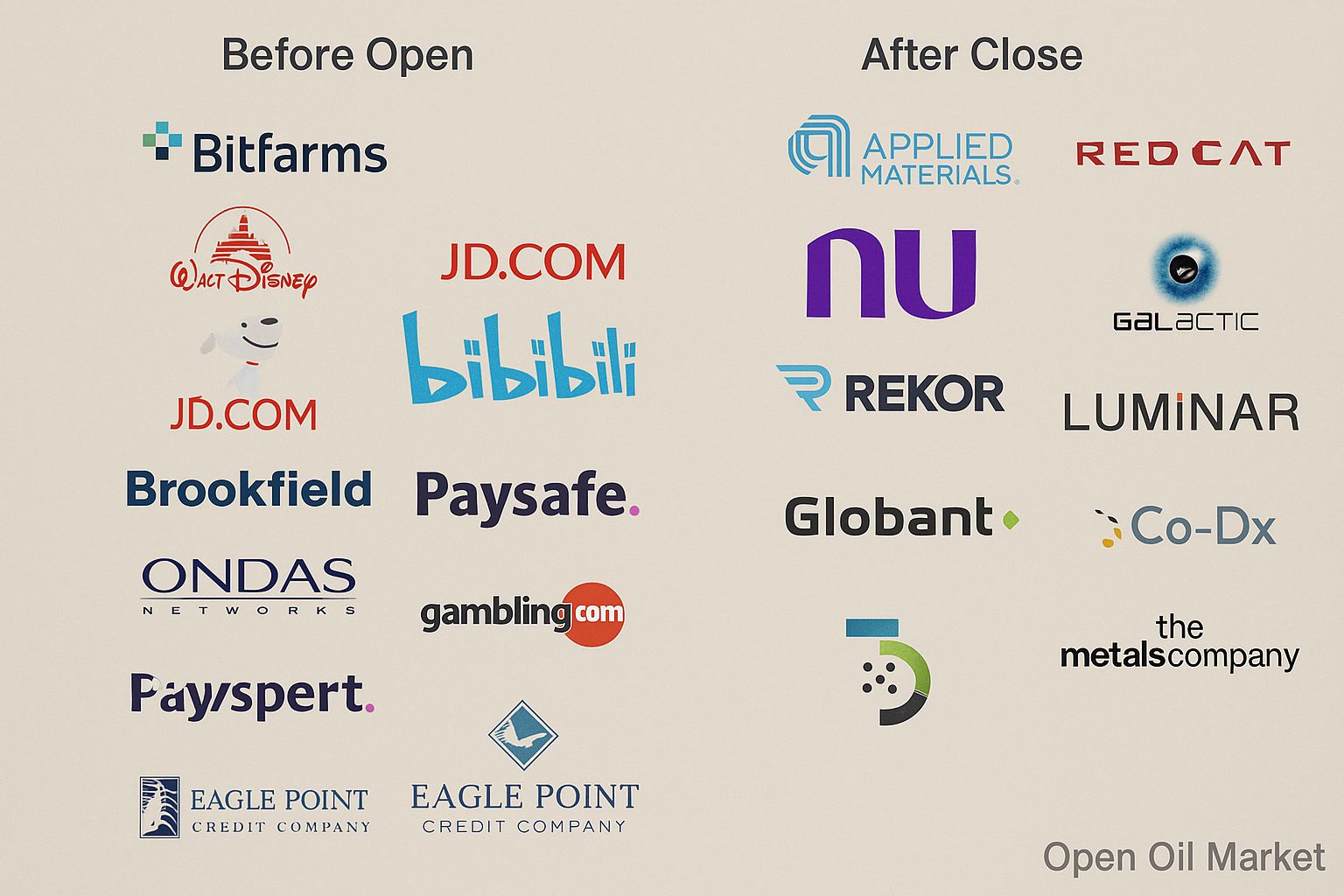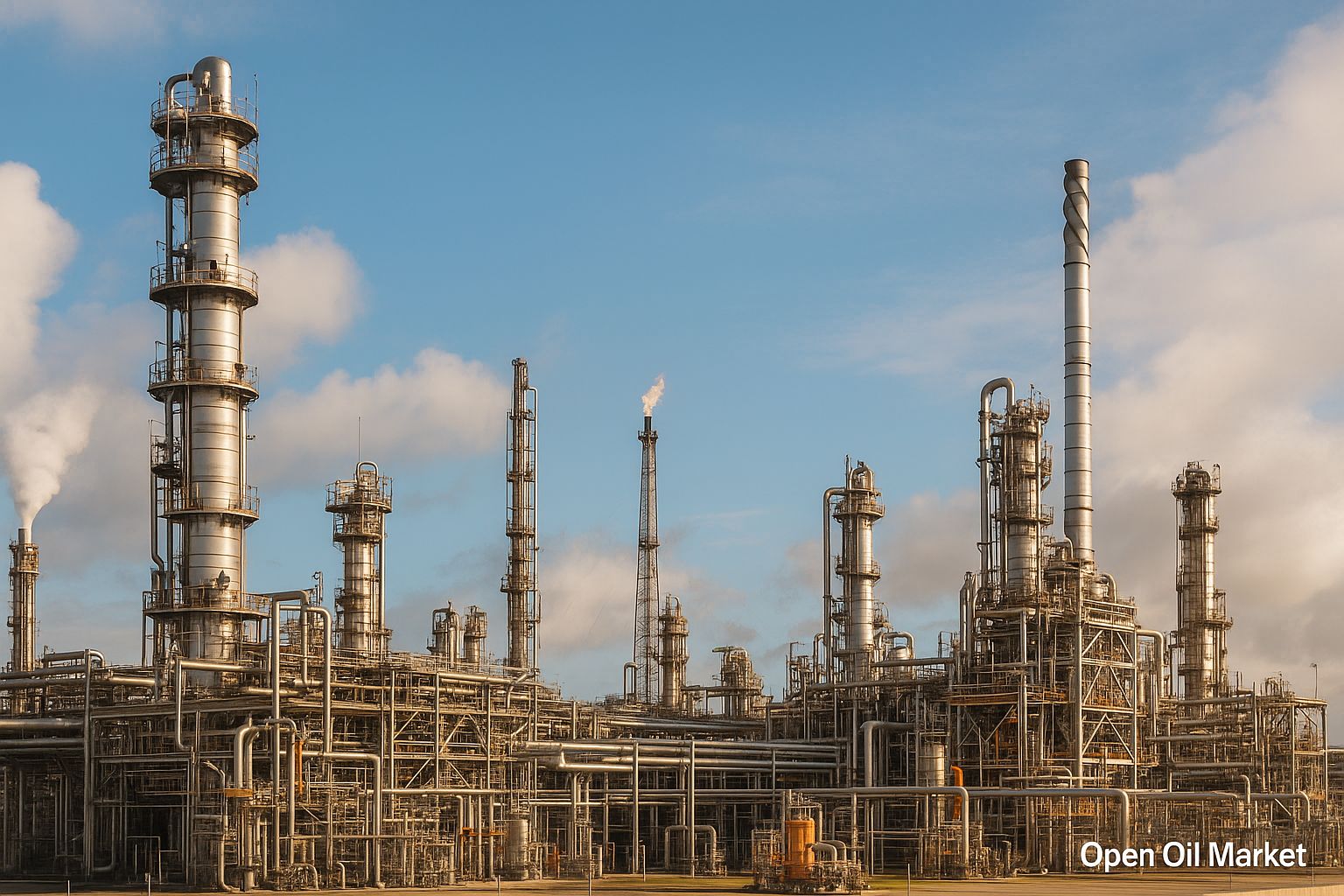
Overview of Fuel and Energy Complex News for Monday, 27 October 2025: Sanction Pressure on the Energy Sector, Stabilisation of the Domestic Fuel Market, Record Gas Reserves in Europe, and Record Investment in Renewable Energy.
Current events in the fuel and energy complex (FEC) as of 27 October 2025 are unfolding against the backdrop of the ongoing sanctions standoff between Russia and Western countries, as well as in anticipation of the winter season. The sanction pressure from Western nations remains relentless: last week, the US imposed direct sanctions on the largest Russian oil and gas companies, urging allies to completely abandon trade in Russian energy resources. The European Union has approved another package of restrictions aimed at the energy sector in the Russian Federation and eliminating remaining loopholes, including a ban on the re-export of oil products sourced from Russian raw materials via third countries. The UK has expanded its sanctions list to include leading Russian oil companies, as well as certain Chinese oil refining businesses and shipping firms that have assisted Moscow in circumventing the embargo.
Under strong diplomatic pressure from the West, India – a key buyer of Russian oil – has stated its readiness to gradually reduce imports of raw materials from Russia (market data suggests that a reduction in purchases may be possible as early as December). A similar call has been directed at China. Officially, New Delhi and Beijing have not yet confirmed a sharp reduction in purchases, emphasising the priority of energy security; however, even hints at a shift in position are intensifying uncertainty in the oil market and prompting Moscow to actively seek new buyers for its exports.
Simultaneously, global commodity markets are demonstrating relative stability. Oil prices are holding near multi-month lows, with Brent stabilising in the $60–62 per barrel range after a recent drop below $60, driven by abundant supply in the market. The European gas market is entering winter with record fuel reserves – underground gas storage in the EU is over 95% full – which has allowed wholesale prices to decrease to comfortable levels (TTF index around €30 per MWh). In the absence of extreme cold weather, Europe expects to navigate the winter season without gas shortages or sharp price surges.
Against this backdrop, the global energy transition is gaining increasing momentum. Investment in renewable energy has reached historical highs, exceeding investments in fossil fuel extraction. The share of clean sources (solar, wind, hydropower, and other forms of “green” energy) in the world’s electricity generation is steadily growing. Nevertheless, oil, gas, and coal continue to play a crucial role in meeting current demand and ensuring energy security, remaining the foundation of the global energy balance during the transition phase.
In Russia, the domestic fuel market has noticeably stabilised thanks to urgent government measures taken earlier in the autumn. By the end of October, the acute shortage of petrol and diesel that was observed in late summer has largely been eliminated: wholesale prices have retreated from peak values, independent refuelling stations (petrol stations) in most regions have resumed normal sales, and fuel supplies have returned to normal levels. Authorities continue to monitor the situation closely as winter approaches – maintaining restrictions on the export of oil products and support measures for refining to ensure uninterrupted supplies to the domestic market.
Below is an overview of key news and trends in the oil, gas, electricity, renewable energy, and coal sectors, as well as in the Russian fuel market as of the current date.
Oil Market: Oversupply and Sanction Risks
Global oil prices remain under pressure due to oversupply and slowing demand. Brent crude is holding around $60 per barrel, significantly below levels from a month ago and close to the lowest values seen since the start of the year. The market anticipates that by the end of the year, oil supply will exceed demand: OPEC+ countries continue to increase production, while outside the cartel, record levels of output are being achieved by the US, Brazil, and other major producers. Meanwhile, global oil consumption growth is slowing amid weak economic dynamics in Europe and China, along with a previous period of high prices, resulting in increasing global oil inventories that are exerting downward pressure on prices.
- Sanctions and Geopolitical Instability. The intensification of Western sanctions against the Russian oil sector fuels uncertainty: the US and Europe are effectively pursuing a complete embargo on Russian energy resources, imposing restrictions against companies, the tanker “shadow fleet”, and intermediaries. Military risks also persist, as Ukrainian drone attacks on Russian oil infrastructure periodically disrupt individual refineries and pipelines. Any serious escalation could reduce oil supply in the market and trigger a price surge, despite the overall glut.
- India and the Redirection of Flows. India, the largest importer of Russian oil, may reduce purchases from Russia under external pressure. Over 30% of India’s imports have come from Russian raw materials, so a withdrawal would force Moscow to redirect these volumes to other markets or reduce production. It is expected that the lost volumes for India would be compensated by suppliers from the Middle East, Africa, and the Americas, preventing a global shortage. However, the loss of the Indian market for Russian oil companies would mean a reduction in export revenue and increased competition for Asian buyers. For now, India and China continue to purchase significant volumes of Russian oil, providing some support for Russian exports.
Forecasts: analysts believe that a level of around $60 per barrel for Brent has become a sort of lower boundary for the price range under current conditions. The oversupply prevents oil prices from rising significantly; however, sanction and geopolitical risks, as well as OPEC+ readiness to cut production if necessary, provide a supportive factor that stops prices from falling substantially below this level for an extended period. Market participants are adopting a cautious position, evaluating the balance of risks and anticipating signals for further actions from major producers.
Natural Gas: Record Reserves in Europe and Eastern Shift of Russian Exports
The European gas market is confidently entering the winter period. Underground gas storage in the EU is filled to record levels, creating a solid reserve for cold weather. Consequently, along with active autumn imports of liquefied natural gas (LNG) (significant volumes of LNG have been arriving in Europe from the US, Qatar, and other countries due to diminishing demand in Asia), wholesale gas prices remain low. The TTF exchange index has stabilised around €30 per MWh, significantly lower than peak values observed in autumn 2022. The risk of a gas deficit this coming winter has significantly decreased, although final consumer comfort will depend on weather conditions and the uninterrupted supply of LNG.
For Russia, losing the European gas market has prompted a rapid reorientation of exports towards the East. Pipeline gas deliveries to China via the “Power of Siberia” route have reached record levels this year, closely approaching the project's designed capacity. Additionally, progress is being made on the second phase of the “Power of Siberia – 2” pipeline through Mongolia, which aims to increase Russian gas exports to China in the future. Sales of Russian LNG are also on the rise: the launch of new production lines in Yamal and Sakhalin has allowed additional shipments of liquefied gas to China, India, and several other Asian countries. Nevertheless, the total export of gas from Russia is still below pre-sanction levels – it is impossible to fully replace the European market in terms of volume and infrastructure in the short term. Russian gas companies are actively expanding infrastructure in the eastern direction and entering into long-term contracts in Asia in an effort to establish a presence in the rapidly growing Eastern markets.
Renewable Energy: Record Growth and Integration Challenges
The renewable energy sector continues to grow rapidly. By the end of 2025, renewable energy is expected to account for about one-third of the total global electricity generation, closely approaching coal's generation levels. State and private investments in “green” energy are at record highs, already exceeding investments in oil and gas extraction projects. This surge is driven by government support programmes, technological advancements, and countries' ambitions to reduce their reliance on hydrocarbons.
However, the rapid development of solar and wind generation is accompanied by new challenges. Energy systems require increasingly more capacity for energy storage and reserve due to the variable production characterising renewable sources. Network infrastructure developments are not keeping pace with the commissioning of new renewable energy stations in all regions: in some areas, limited transmission capacity and a shortage of qualified specialists are slowing the connection of new capacities. Some energy companies are already facing the need to limit renewable generation at times due to grid overload. For further sustainable growth in “green” energy, governments and businesses must address integration challenges – from building modern storage systems and upgrading grids to training personnel for new energy demands.
Coal Sector: High Demand in Asia and Accelerated Phase-out in the West
The global coal market in 2025 is exhibiting a dual dynamic. In Asian countries, coal demand remains high, supporting global prices and production levels. This summer, abnormal heat and temporary disruptions in mining operations forced China and several other East Asian states to sharply increase coal imports for power plants – preventing prices from falling and keeping them at relatively high levels. Major coal companies continue to generate significant revenue in the Asian market, compensating for reduced interest in the West.
Simultaneously, developed economies are rapidly phasing out coal generation. In Europe, North America, and several other regions, old coal-fired power plants are being decommissioned en masse, no new ones are being constructed, and the share of coal in electricity production has already decreased to around 25%, continuing to fall. Given the anticipated long-term decline in demand, many coal mining companies are diversifying their businesses (investing in related sectors such as metallurgical industries or rare earth resources) and optimising costs in preparation for a shrinking market. Governments are developing support programmes for mining regions to mitigate the socio-economic impacts of the energy transition. The global trend is clear: the role of coal will steadily diminish as climate agendas and the transition to low-carbon technologies in the global energy sector are implemented.
Russian Fuel Market: Stabilisation Post-Crisis and Domestic Market Prioritisation
The autumn supply crisis in the Russian petroleum products market has largely been overcome. Emergency measures undertaken by the government in September–October have helped eliminate the shortages of petrol and diesel that became acute at the end of summer. Wholesale prices for motor fuels have significantly decreased from peak values recorded in August, independent fuel stations have resumed full operations, and supply of petrol and diesel has returned to normal in most regions. To prevent a new surge in problems, authorities have extended the total ban on the export of automotive petrol until the end of the year and maintained strict quotas on diesel exports. The “fuel damping” mechanism continues to operate, whereby the government compensates refiners for the difference between export and domestic prices, encouraging maximum supplies to the domestic market.
The government has demanded that oil companies increase the production of light petroleum products ahead of the winter season, postponing non-critical refinery maintenance. Simultaneously, customs duties on the import of petrol and diesel have been suspended temporarily (until mid-2026) to attract additional volumes of fuel from abroad if necessary. Control over the retail market situation has been intensified: the Federal Antimonopoly Service (FAS) is curbing instances of unjustified price increases at fuel stations, while striving to avoid direct administrative intervention in pricing.
As a result, the production of motor fuels in Russia has stabilised at a sufficient level, fully covering the country’s current needs. The government assures that the measures taken in autumn are adequate for navigating the winter without disruptions in the supply of petrol and diesel. Restrictions on the export of oil products will gradually be lifted only as the domestic market becomes saturated and necessary fuel reserves are formed. Despite temporary losses in export revenue, oil companies' losses are partially mitigated by damping payments and the stability of domestic sales. The crisis of 2025 has exposed vulnerable areas of the industry – from insufficient storage capacity and logistical bottlenecks to inadequate depth of oil refining. These issues are particularly monitored by the authorities: the modernisation of storage and distribution infrastructure has commenced, and incentives for increasing refinery efficiency are being considered. Thus, the Russian FEC approaches winter under increased government oversight, while the stabilisation achieved in the domestic fuel market bolsters confidence among market participants and investors.




